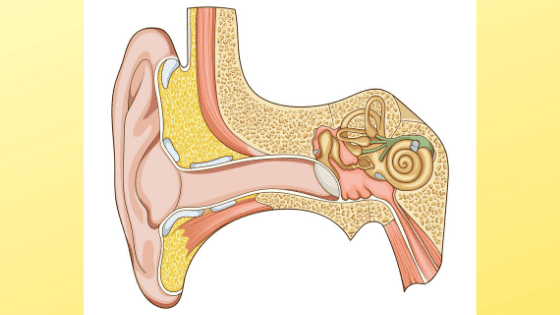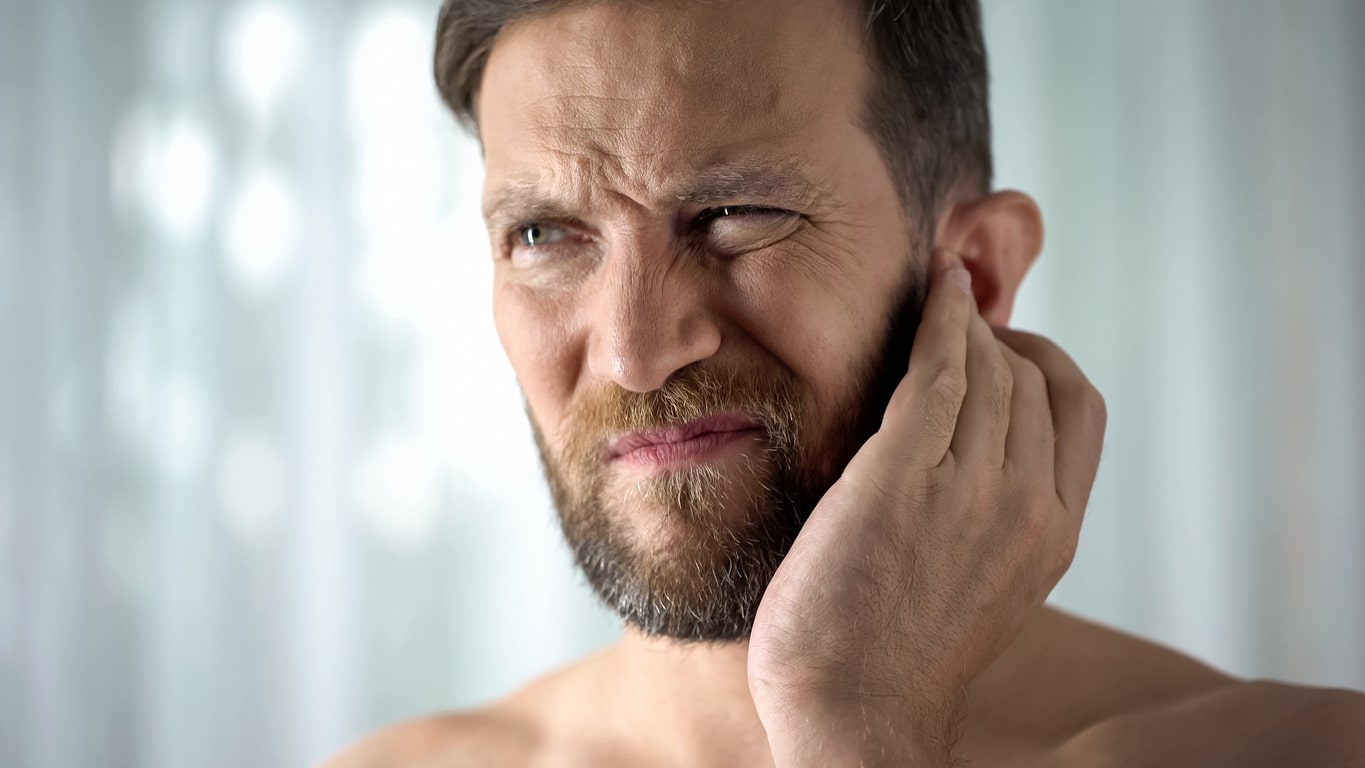Waking up with ear pain can be incredibly frustrating and disruptive. Ear infections in adults…

Why Am I Dizzy? BPPV Vertigo Symptoms and Treatment
BPPV Vertigo
Everyone knows that ears are for hearing, but did you know that your ears are also responsible for balance? When you stand up quickly and feel light-headed, your ears are to blame. Read on to learn how healthy ears control balance, plus the causes and treatments of vertigo.
What is Vertigo?
Vertigo is dizziness caused by problems with the inner ear, the brain, or sensory nerve pathways. Symptoms include:
- Feeling dizzy and off balance.
- Feeling like you are spinning or like the world is spinning around you.
- Swaying or feeling pulled to one side.
- Nausea and vomiting.
- In some cases, ringing in the ears.
Usually, the cause of vertigo is an inner ear disorder.
The inner ear is the innermost part of your ear and is a series of semicircular canals plus the cochlea. The cochlea is an essential component in your hearing pathway. It converts sound pressure patterns into electrochemical pulses that pass to the brain through the auditory nerve.
The vestibular system is a sensory system of three semicircular canals that come together near the cochlea. It sends signals to your brain about your altitude, linear movement, and head and body movement. The system detects your body’s position through fluids and fine, hair-like sensors inside your ear.

What is BPPV, an Inner Ear Disorder?
BPPV, or benign paroxysmal positional vertigo, is one of the most common forms of vertigo.
BPPV develops when calcium carbonate crystals, also called otoconia, shift and become trapped in the semicircular canals of the inner ear. Otoconia occur naturally in the ear and dissolve over time when they land in the utricle, a portion of the inner ear near the semicircular canals. Unlike the utricle, the semicircular canals cannot dissolve otoconia. Instead, the otoconia roll over the cilia, which are hair-like structures in the inner ear that send signals to your brain about your balance. In some cases, it may be due to head impacts, which can cause damage to the inner ear, migraines, or extended time laying on your back. BPPV can also develop after a traumatic event, such as a fall, accident, or sports injury.
Tilting your head up and down, standing up, and sitting down may bring on the otoconia to move across the cilia, causing bouts of dizziness.
BPPV is often episodic and recurring, but the actual dizziness comes and goes quickly, often triggered by specific head positioning. While BPPV is uncomfortable and unpleasant, it’s not usually a significant problem. The primary danger with this type of vertigo is the risk of falling or bumping into objects.
The specific cause of BPPV is unknown in most people. It is most common in people aged 50 and over, but it can present in people of any age. It is more common in women than in men.
Symptoms of BPPV
Benign Paroxysmal Positional Vertigo (BPPV) is characterized by brief episodes of mild to intense dizziness, usually triggered by changes in head position. The symptoms can vary in frequency and severity, but common symptoms include:
- Vertigo: a feeling of spinning or dizziness
- Dizziness: a feeling of lightheadedness or unsteadiness
- Nausea and vomiting
- Abnormal rhythmic eye movements (nystagmus)
- Headaches
- Ear pain or discomfort
These symptoms can be triggered by various activities, such as:
- Rolling over in bed
- Looking up or down
- Bending or twisting
- Getting up from a lying down position
If you notice these symptoms, especially when changing your head position, it might be time to check with a healthcare provider.
Who is at Risk for BPPV?
BPPV can affect anyone, but some people are more likely to develop the condition. These include:
- Older adults: BPPV is more common in people over the age of 50.
- Women: Women are more likely to develop BPPV than men.
- People with a history of head injuries: Head injuries can increase the risk of developing BPPV.
- People with a history of ear problems: Certain ear conditions, such as Meniere’s disease, can increase the risk of developing BPPV.
Understanding these risk factors can help you take preventive measures and seek early treatment if necessary.
Diagnosis of Paroxysmal Positional Vertigo (BPPV)
Diagnosing BPPV typically involves a physical exam and a review of the patient’s medical history. The doctor may perform a series of head and body movements to trigger vertigo and check for abnormal rhythmic eye movements (nystagmus). The doctor may also recommend additional tests, such as:
- Electronystagmography (ENG): a test that measures the movement of the eyes.
- Caloric testing: a test that measures the response of the inner ear to changes in temperature.
- Vestibular function tests: tests that measure the function of the vestibular system.
These tests help the healthcare provider perform a thorough evaluation and recommend the best course of action for managing your symptoms.
Other Causes of Vertigo and Vestibular Disorders
BPPV is the most common cause of vertigo, but other vestibular disorders can also cause dizziness. These include:
- Meniere’s Disease – An inner ear problem caused by fluid buildup in the ear. The pressure changes from the fluid cause vertigo symptoms, and it can also be accompanied by tinnitus (ringing in the ear).
- Vestibular Neuritis or Labyrinthitis – Dizziness caused by an infection. The inflammation from the infection affects the ear nerves that control balance.
- Less common causes of vertigo are head and neck injuries, brain issues such as strokes and tumors, some medications, and migraines.
When to Seek Medical Help
If your vertigo is sudden, severe, or lasts for long bouts, if you experience recurring dizziness over a long time, or if your symptoms do not go away on their own, make an appointment with your doctor.
When you experience vertigo, keep yourself safe by sitting as soon as you begin to feel dizzy. Use a cane when you walk if your episodes are frequent or prolonged and turn lights on when you get up during the night.Your family practice doctor may refer you to an ENT (ear, nose, and throat) specialist, or you can schedule an appointment with ExcelENT directly.
Vertigo Treatments to Prevent Falls
The form of treatment depends upon the cause of vertigo. Often, time is the best treatment because vertigo usually resolves on its own. Your brain is incredibly adaptable, so it can compensate for inner ear issues and rely on other bodily mechanisms for balance. One such test is the Fukuda-Unterberger test, which requires patients to march in place for 30 seconds with their eyes closed to assess balance.
For severe or persistent cases of vertigo, your doctor may treat you through:
- Vestibular Rehabilitation – A form of therapy that strengthens your vestibular system. This form of treatment is for recurring vertigo. It trains you to use your other senses to compensate for inner ear issues.
- Canalith Repositioning – A series of head and body movements that treat BPPV. Your doctor or audiologist will guide you through a few positions that will dislodge the calcium deposits from the canal and move them into the inner ear chamber so your body can reabsorb them. You’ll hold each position for approximately 30 seconds before moving to another position. Vertigo usually resolves itself over time, so canalith repositioning isn’t always necessary. However, it can dramatically shorten your healing.
- Surgery – If the vertigo is due to a brain tumor or a head injury, surgery may be necessary.
Lifestyle and Home Remedies
While BPPV can be treated with medical interventions, there are also some lifestyle and home remedies that can help manage the condition. These include:
- Avoiding activities that trigger vertigo.
- Getting plenty of rest.
- Avoiding heavy lifting or bending.
- Staying hydrated.
- Avoiding caffeine and nicotine.
- Practicing relaxation techniques, such as meditation or deep breathing.
- Performing exercises that help improve balance and coordination.
Incorporating these practices into your daily routine can help manage your symptoms and improve your overall well-being.
Emergency Situations
In some cases, BPPV can lead to emergency situations, such as:
- Severe vertigo that lasts for more than a few minutes.
- Vomiting that leads to dehydration.
- Falls that result in injury.
- Headaches or ear pain that are severe or persistent.
If you experience any of these symptoms, it is essential to seek medical help immediately. Your doctor may recommend additional tests or treatments to manage the condition and prevent further complications. Don’t hesitate to reach out for medical help to ensure your safety and well-being.
What Do I Do if My BPPV Comes Back?
For some people, BPPV will come back over time. You can make another appointment with your doctor or audiologist, or you can do the canalith repositioning yourself at home. A few treatments are all that it takes to dislodge the calcium crystals and alleviate your symptoms.
If you think you may be experiencing persistent vertigo, make an appointment with ExcelENT today.
Discover how the team at ExcelENT of Alabama in Birmingham, AL, can help you regain your balance.
Are you having balance issues? Contact the team at ExcelENT of Alabama today to schedule an appointment for a medical evaluation to receive the proper diagnosis and treatment plan for your vertigo.


